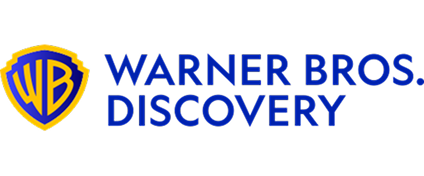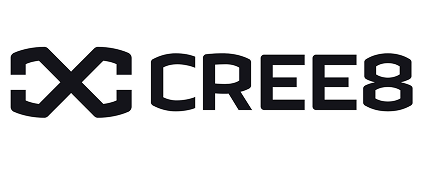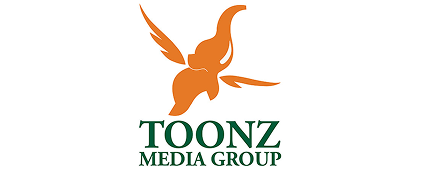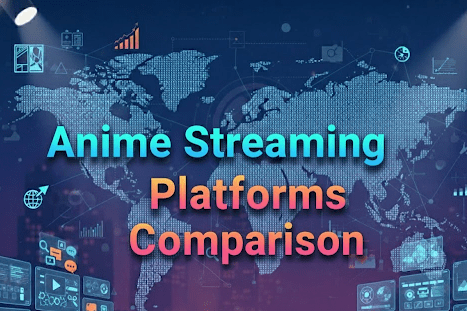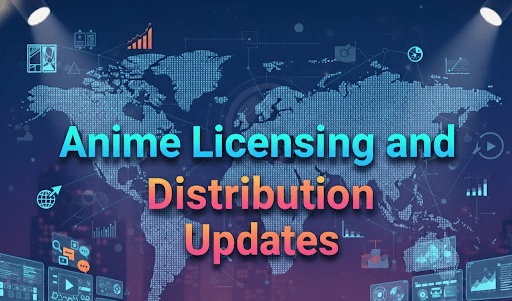Introduction
The entertainment industry is constantly evolving, and finding the best production houses in Chile can be a game-changer. Whether you’re looking for a full-service production studio or a niche expert in animation, the right partner can help turn your project into a success. But where do you start? With the vast global network that Vitrina Business Network (VBN) provides, you get real-time, verified data on the best production companies in over 100 countries. While Vitrina doesn’t solve every problem, it’s a valuable tool to help you make informed decisions.
Key Takeaways
| Key Insights | Details |
| Vitrina Global Reach | Vitrina provides access to over 80,000 production houses across 100+ countries. |
| Real-Time Data | Daily updates ensure you’re getting the latest information on production capabilities. |
| Verified Vendors | VBN uses multi-layered verification to ensure production houses are trusted and reliable. |
| Diverse Options | From boutique studios to Hollywood-style production houses, VBN helps match your needs. |
Table of content
- Introduction
- Key Takeaways
- General Overview of Production Houses in Chile
- Lists and Specific Types of Production Houses
- Industry-Specific Categories of Production Houses
- Award-Winning and High-Quality Production Houses
- Specialized and Niche Services
- Emerging and Outsourced Production Opportunities
- Professional and High-Level Expertise
- Conclusion
- FAQs
General Overview of Production Houses in Chile
Top Production Houses in Chile
When you need the top production houses in Chile, look no further than Vitrina’s curated lists. These are the studios and companies leading the way in high-quality film and TV production. Vitrina connects buyers to verified production vendors with proven success. Whether you’re working on a blockbuster or a commercial, these companies have the infrastructure, technology, and talent to bring your vision to life.
1. Megamedia
Overview: Megamedia is a leading Chilean media group, involved in television production, broadcasting, and digital media. It operates multiple television channels in Chile, offering a wide range of content.
Notable Projects: Famous for producing popular television series, news programs, and entertainment shows in Chile.
Awards: Multiple awards for its contributions to Chilean television and media.
2. Fabula
Overview: Fabula is a renowned Chilean film and television production company, specializing in producing high-quality films, documentaries, and television series for both local and international markets.
Notable Projects: Known for producing the Academy Award-winning film “A Fantastic Woman” and other critically acclaimed projects.
Awards: Numerous awards, including an Academy Award for Best Foreign Language Film.
3. Secuoya Chile
Overview: Secuoya Chile is a branch of the Spanish multinational Secuoya Group, specializing in content production, post-production, and media services for television and digital platforms in Chile.
Notable Projects: Known for producing high-quality TV shows and content for Chilean and Latin American markets.
Awards: Recognized for its innovative production services and high-quality content creation.
4. Mediapro Chile
Overview: Mediapro Chile is part of the global Mediapro Group, providing production services for television, film, and digital media in Chile and across Latin America.
Notable Projects: Known for producing and co-producing numerous television series, sports events, and entertainment programs in Chile.
Awards: Multiple awards for its media production services in Chile and Latin America.
5. Chile Films
Overview: Chile Films is one of the oldest film production companies in Chile, providing full-service production for feature films, television series, and commercials.
Notable Projects: Known for producing high-quality content and offering production services for international films shot in Chile.
Awards: Recognized for its long-standing contributions to the Chilean film industry.
6. The Roots Productions
Overview: The Roots Productions is a Chilean production company specializing in producing high-quality content for film, television, and digital platforms, with a focus on storytelling that resonates with Latin American audiences.
Notable Projects: Known for producing creative and innovative content that has been showcased at film festivals worldwide.
Awards: Numerous accolades for its contributions to independent film and creative media.
7. RF Films
Overview: RF Films is a Chilean production company known for creating television commercials, feature films, and digital media content for both local and international markets.
Notable Projects: Famous for producing commercials and branded content for leading brands in Chile and beyond.
Awards: Recognized with several awards for its creativity in commercial and film production.
8. Parox
Overview: Parox is a prominent Chilean production company, specializing in producing television series, films, and documentaries for local and international audiences.
Notable Projects: Known for producing critically acclaimed TV series and films that have gained international recognition.
Awards: Multiple awards for its contributions to Chilean television and film.
9. Universidad del Desarrollo
Overview: Universidad del Desarrollo is a private university in Chile, offering a wide range of academic programs, including media and film production courses that prepare students for careers in the entertainment industry.
Notable Projects: Known for supporting student films and fostering young talent in Chile’s media landscape.
Awards: Recognized for its educational contributions to the Chilean film and media industry.
10. Universidad de Valparaíso
Overview: Universidad de Valparaíso is a public university in Chile, offering specialized programs in film and media production, contributing to the development of the country’s creative industries.
Notable Projects: Known for producing student films and supporting research in the field of media and communication.
Awards: Recognized for its contributions to film education and cultural development in Chile.
Leading Production Companies in Chile
Some production companies stand above the rest. Leading production companies in Chile offer state-of-the-art facilities, cutting-edge post-production capabilities, and experienced teams that know how to get the job done. Through VBN, you can easily discover these leaders and view their complete portfolios, giving you all the insights needed to make your choice.
Start Your Search for Top Production Companies

Lists and Specific Types of Production Houses
| Type of Production House | Description |
| Independent Production Houses | Unique companies often focusing on innovative, creative projects that are off the beaten path. |
| Full-Service Production Houses | Companies that manage everything from pre-production to post-production, offering end-to-end solutions. |
| Boutique Studios | Smaller, more specialized studios providing personalized services and a hands-on approach to production. |
| International Production Companies | Global companies with offices in Chile that bring a worldwide perspective to every project. |
List of Production Companies in Chile
Vitrina’s comprehensive lists allow you to discover the best production companies in Chile, filtered by your project’s specific needs. Whether you’re looking for film studios, TV production houses, or animation specialists, VBN offers reliable, detailed lists that make the selection process easy and efficient.
Industry-Specific Categories of Production Houses
Film and TV Production Houses in Chile
Looking for specialists in film and TV production? Vitrina helps connect you with companies that have proven expertise in crafting high-quality entertainment content. These companies often work with major broadcasters and streamers, producing everything from gripping dramas to reality TV shows.
Example: Companies like Globo Brazil use Vitrina to scout film and TV studios for their international co-productions.
Documentary Production Companies in Chile
If you’re creating a documentary, the production house you choose is crucial. Vitrina can help connect you with companies in Chile that specialize in factual content, offering deep knowledge in everything from development to distribution. These companies often have experience working on sensitive subjects and global issues.
Example: VBN has been instrumental in helping companies like Netflix find documentary production houses that suit their unique storytelling needs.
Access Real-Time Production Vendor Profiles

Award-Winning and High-Quality Production Houses
Award-Winning Production Houses in Chile
These are the production houses that have received critical acclaim across the globe. They bring a wealth of experience and a proven track record of delivering award-winning content. Vitrina’s verified lists include production companies in Chile that have earned recognition at major international festivals, making them top candidates for your next project.
Top-Tier Production Companies in Chile
Sometimes, you need the best of the best. Top-tier production companies in Chile have the talent, budget, and infrastructure to produce large-scale projects, including blockbuster films and high-budget TV series. Whether you need cutting-edge special effects or massive studio spaces, these companies offer world-class production value.
Specialized and Niche Services
VFX Production Houses in Chile
When you need high-end visual effects (VFX), Vitrina helps you find the top VFX production houses in Chile. These companies provide everything from CGI to motion capture, and are often used by major Hollywood studios for post-production work.
Corporate Video Production Houses in Chile
Corporate clients can benefit from Vitrina’s listings of corporate video production houses. These companies specialize in creating branded content that tells your story while engaging your audience. Whether it’s a commercial, promotional video, or internal training material, you’ll find the right team with ease.
- Expertise in marketing videos
- Fast turnaround times
- Proven success in corporate storytelling
Emerging and Outsourced Production Opportunities
Emerging Production Houses in Chile
New production houses are popping up all the time. Vitrina keeps tabs on these emerging companies, which often bring fresh, innovative approaches to content creation. If you’re seeking a partner that’s ahead of the curve, these companies could be the perfect fit for your next project.
Example: Companies like Friday Filmworks in India have utilized Vitrina to connect with emerging production houses in Hollywood.
Outsourced Production Companies in Chile
Many production companies offer outsourced production services. Vitrina provides you with up-to-date information on these service providers, allowing you to choose the right partner for outsourcing certain aspects of your project, whether it’s post-production or animation.
Professional and High-Level Expertise
Professional Film Production Houses in Chile
Sometimes, you need a team with an established reputation. Vitrina connects you with professional film production houses in Chile that have been trusted by major studios and broadcasters. These companies have the experience and resources to handle complex projects and meet tight deadlines.
Video Production Houses in Chile
With digital platforms on the rise, video production houses are becoming increasingly important. Whether you’re creating YouTube content, social media campaigns, or digital ads, Vitrina helps you find video production specialists that know how to engage audiences online.
Conclusion
In the world of content creation, finding the right production partner is essential. Vitrina Business Network offers a valuable platform to discover verified production houses across 100+ countries, ensuring you’re working with the best. While not every challenge can be solved through Vitrina, it certainly provides a robust tool for content buyers, distributors, and service providers looking to connect with top production companies in Chile. Use Vitrina’s insights and resources to streamline your search and focus on bringing your creative visions to life.
Frequently Asked Questions
Vitrina uses a dynamic, multi-layered process to verify companies based on their portfolio, past projects, and market standing.
Yes, Vitrina’s platform allows you to search for specific services like VFX, animation, or corporate video production.
Vitrina updates its listings daily, ensuring you have access to the latest data.
Any company in the entertainment supply chain, from distributors to content buyers, can benefit from Vitrina’s services.
No, Vitrina covers a wide range of production houses, from independent studios to large-scale enterprises.
Are you ready to take your project to the next level? Join the Vitrina Business Network today to discover top production houses, niche specialists, and real-time updates that can help you find the perfect partners for your next big project.


































